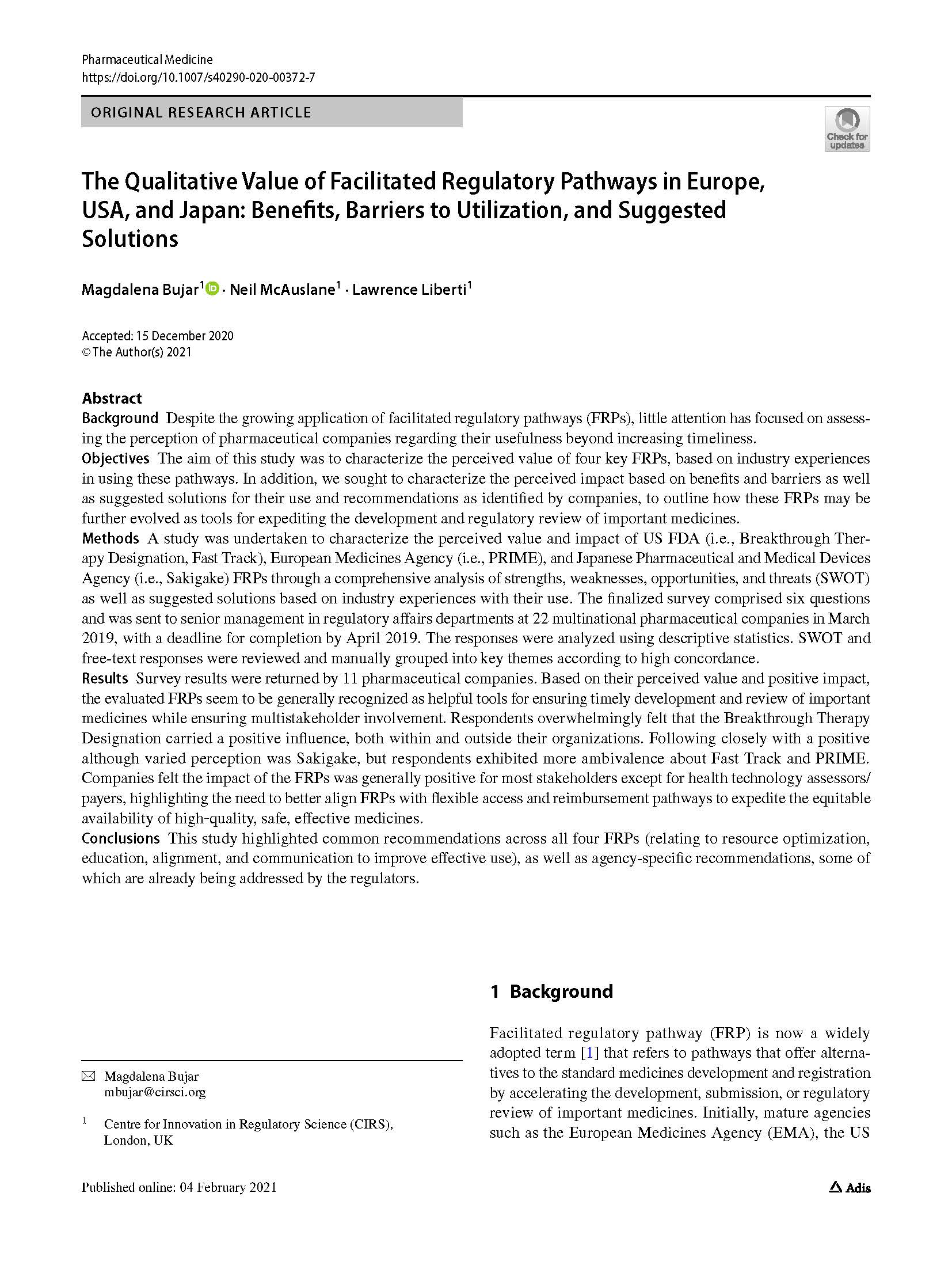Background: Despite the growing application of facilitated regulatory pathways (FRPs), little attention has focused on assessing the perception of pharmaceutical companies regarding their usefulness beyond increasing timeliness.
Objectives: The aim of this study was to characterize the perceived value of four key FRPs, based on industry experiences in using these pathways. In addition, we sought to characterize the perceived impact based on benefits and barriers as well as suggested solutions for their use and recommendations as identified by companies, to outline how these FRPs may be further evolved as tools for expediting the development and regulatory review of important medicines.
Methods: A study was undertaken to characterize the perceived value and impact of US FDA (i.e., Breakthrough Therapy Designation, Fast Track), European Medicines Agency (i.e., PRIME), and Japanese Pharmaceutical and Medical Devices Agency (i.e., Sakigake) FRPs through a comprehensive analysis of strengths, weaknesses, opportunities, and threats (SWOT) as well as suggested solutions based on industry experiences with their use. The finalized survey comprised six questions and was sent to senior management in regulatory affairs departments at 22 multinational pharmaceutical companies in March 2019, with a deadline for completion by April 2019. The responses were analyzed using descriptive statistics. SWOT and free-text responses were reviewed and manually grouped into key themes according to high concordance.
Results: Survey results were returned by 11 pharmaceutical companies. Based on their perceived value and positive impact, the evaluated FRPs seem to be generally recognized as helpful tools for ensuring timely development and review of important medicines while ensuring multistakeholder involvement. Respondents overwhelmingly felt that the Breakthrough Therapy Designation carried a positive influence, both within and outside their organizations. Following closely with a positive although varied perception was Sakigake, but respondents exhibited more ambivalence about Fast Track and PRIME. Companies felt the impact of the FRPs was generally positive for most stakeholders except for health technology assessors/payers, highlighting the need to better align FRPs with flexible access and reimbursement pathways to expedite the equitable availability of high‐quality, safe, effective medicines.
Conclusions: This study highlighted common recommendations across all four FRPs (relating to resource optimization, education, alignment, and communication to improve effective use), as well as agency-specific recommendations, some of which are already being addressed by the regulators.
Bujar M, McAuslane N, Liberti L. The Qualitative Value of Facilitated Regulatory Pathways in Europe, USA, and Japan: Benefits, Barriers to Utilization, and Suggested Solutions. Pharmaceut Med. 2021;35(2):113-122. doi:10.1007/s40290-020-00372-7

